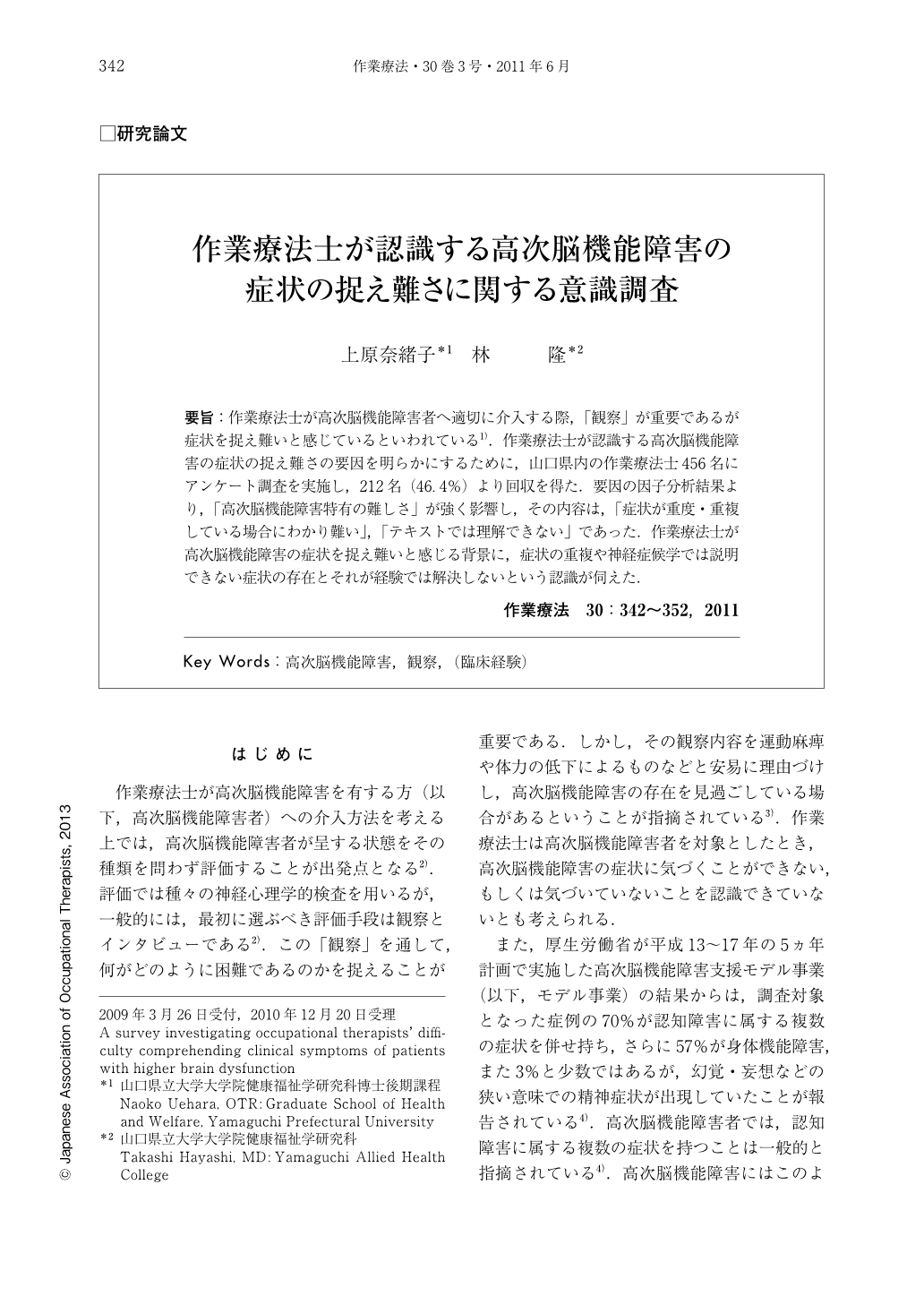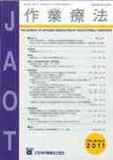Japanese
English
- 販売していません
- Abstract 文献概要
- 1ページ目 Look Inside
- 参考文献 Reference
- サイト内被引用 Cited by
要旨:作業療法士が高次脳機能障害者へ適切に介入する際,「観察」が重要であるが症状を捉え難いと感じているといわれている1).作業療法士が認識する高次脳機能障害の症状の捉え難さの要因を明らかにするために,山口県内の作業療法士456名にアンケート調査を実施し,212名(46.4%)より回収を得た.要因の因子分析結果より,「高次脳機能障害特有の難しさ」が強く影響し,その内容は,「症状が重度・重複している場合にわかり難い」,「テキストでは理解できない」であった.作業療法士が高次脳機能障害の症状を捉え難いと感じる背景に,症状の重複や神経症候学では説明できない症状の存在とそれが経験では解決しないという認識が伺えた.
When occupational therapists want to suitably treat patients with higher brain dysfunctions, they should pay attention to the patients' clinical features. However, occupational therapists have reported difficulty understanding the symptoms of patients with higher brain dysfunction. Therefore, in order to disclose the cause, we surveyed occupational therapists' awareness of the clinical symptoms of patients with higher brain dysfunction. A written questionnaire was administered to 456 occupational therapists in Yamaguchi Prefecture, and the response rate was 46.4%.
We analyzed the results by factor analysis and speculated that particular difficulties influenced the misdiagnosis of the symptoms. These particular difficulties included severe and overlapping symptoms, and inadequate textbooks. Many occupational therapists thought that clinical carrier could not overcome these problems. Occupational therapists usually assessed and treated their patients using a neurological framework. We thought that the particular difficulties felt by occupational therapists were principally based on the difficulty of understanding higher brain dysfunction from a neurological point of view.

Copyright © 2011, Japanese Association of Occupational Therapists. All rights reserved.


